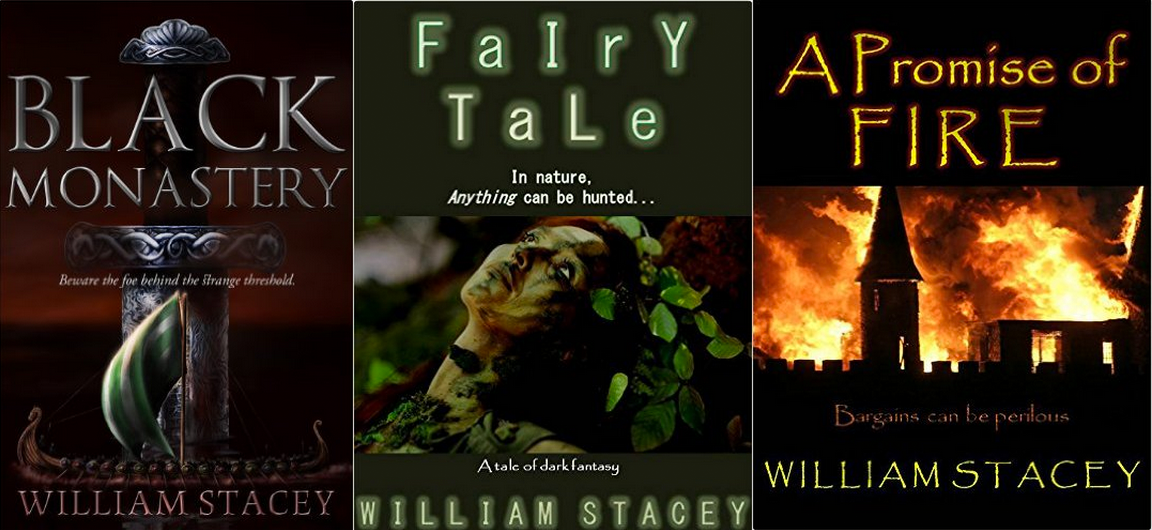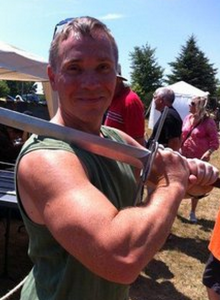
Black Monastery was the first book I ever critiqued that got published… and I read it again! Stacey spins a good yarn and writes well. Can’t wait to try Fairy Tale and A Promise of Fire.
My last post examined the historical accuracy of female Vikings and super-cool shield maidens like Lagertha, the legendary—but likely imaginary—wife of Ragnar Lothbrok, who, let’s be honest, may also have been more legend than real. While there remains debate among some historians on the existence of shield maidens, I’m in the camp with the nonbelievers: the shield maiden is Viking legend. But, what about elsewhere in Europe? If shield maidens had no basis in historical fact, then what about female knights, female generals?
There are, happily, many really cool examples of women in European history picking up swords and fighting—even leading armies—but they weren’t knights, at least not as we know them. Byzantine historian John Skylitzes notes that women fought in Bulgaria in 971, numbering among the fallen Varangian warriors (on occasion, Vikings were identified as Varangian). I don’t know how many there were, but apparently there were enough to stun observers with their presence. In a paper titled, The Woman Warrior: Gender, Warfare, and Society in Medieval Europe, Megan McLaughlin from the Department of History at the University of Illinois, documented numerous anecdotal examples of women warriors in medieval Europe—particularly during the central Middle Ages. Much as in Viking history, though, McLaughlin notes that women warriors in medieval Europe were hardly commonplace and, in fact, were unusual enough to be considered anomalies. Most of the occurrences had to do with “emergency situations: wives of nobles who defended castles temporarily while their husbands were absent, women who snatched up weapons in defense of their homes when invaders threatened…” This makes sense to me, especially given the gender-role expectations of the time. But, McLaughlin does note some women who fought and led armies for much longer periods of time. Aethelflaed, eldest daughter of Alfred the Great of Wessex, led her forces in attacks on the Vikings settled in the north of England—and not just leading, but actually taking part in the battles. In Italy, we see the Lombard princess Sichelgaita, considered a “fearsome” sight in her armor when she rallied her husband’s men at the siege of Durazzo in 1081. Other examples abound, but my personal favorite is the widow Arnoul II of Guines who from 1220–1222 commanded her soldiers in battles against her own son for control of her widow’s estate. Arnoul, hands down, you’re probably the coolest woman in history!

Twenty-year-old university dropout Cassie Rogan has returned to her small British Columbia home. Tortured by an accident that killed her parents, she drifts, failing life at every turn. When an uncanny lightning storm hits the forest, Cassie discovers that, after centuries of atrophy, the forces of magic are flowing back into our world, and Cassie can wield arcane powers. But everything comes with a price… Available on Amazon.
These examples, though, mostly show that female warriors in medieval Europe were predominantly noble, as McLaughlin wrote, “women of high rank, who might be called on at short notice to support their husbands in war.” This makes sense to me. Some of these women, perhaps even many, probably received formal military instruction for just such an occurrence. In The Treasure of the City of Ladies (a manual of useful information for noblewomen), Christine da Pisan suggests that the wife of a nobleman “ought to have the heart of a man, that is, she ought to know how to use weapons and be familiar with everything that pertains to them, so that she may be ready to command her men if the need arises.”
Overall, I think we can safely assume that some noblewomen did command medieval warriors, especially when those armies were domestically organized and included long-time family retainers and relatives. And while some may point out that commanding an army is not the same thing as being a warrior, as a former professional soldier, I’d have to disagree. Most generals don’t personally engage in hand-to-hand combat. Yet, we—and medieval soldiers—would still almost certainly consider a male general a warrior, so why not a female general? Seems like a double standard to me.
So, what about the state of female warriors in fantasy fiction? Women can be warriors and generals. There is historical precedence for this. But, if you’re going to include female warriors in your fiction, please do so in a believable manner. Martial training—and yes, sword-fighting is indeed a martial art—was a lifelong, physically rigorous study. If you’ve created a story world where women fight alongside (or even in place of) the men, make it as realistic as possible. Untrained people—men or women—who pick up swords and enter into combat with trained, physically fit warriors are going to die. Period. If you’re going to include a female warrior into your medieval Eurocentric story world, give her the size, strength, and training to survive combat. If your female protagonist is a 90-pound woman who has never held a sword before—let alone spent most of her life training for the crucible of combat—she’s not going to survive five seconds in a real fight. None of us would.
The medieval knight was trained from a very young age for the profession of fighting to develop the physical strength and skill to survive. Paul B. Newman in Daily Life of the Middle Ages (one of my favorite go-to medieval-source books) wrote that “knights were the most physically fit people of their day…. at the top of the food chain, so to speak, and had protein-rich diets to fuel their muscle development.” Knights were conditioned from youth to move and fight while wearing as much as 60–70 pounds of armor—comparable to what twenty-first-century soldiers fight with today. You needed to be fit, fit, fit to do this—you still do.
Happily, there’s a lot of help out there for fantasy writers. Use all the wonderful sources available to you on the Internet, like the website of the Association for Renaissance Martial Arts (ARMA) or source books like John Clements’ Medieval Swordsmanship (I found this one after G.R.R. Martin recommended it on his own blog—good enough for George, good enough for me) or David Lindholm and Peter Svard’s Sigmund Ringeck’s Knightly Arts of Combat. There’s no shortage of sources out there to help you write believable female warriors.
So, do like George did with Brienne of Tarth, create a believable female warrior.
‘Cause muscles are sexy on women, too!
I met William Stacey through an online writer’s group. His manuscript for Black Monastery impressed me so I reached out to him and became one of his beta readers. That novel did well, becoming a Breakthrough Novel Award Quarter-Finalist on Amazon in 2014.
He is a former army intelligence officer who served his country for more than thirty years with operational tours in Bosnia and Afghanistan; a husband, father, and avid reader with a love for the macabre; and last but not least a skilled and thoughtful writer. I knew he would write a great blog, and he did not disappoint!
Don’t miss Part 1: The Shield Maiden in History.



